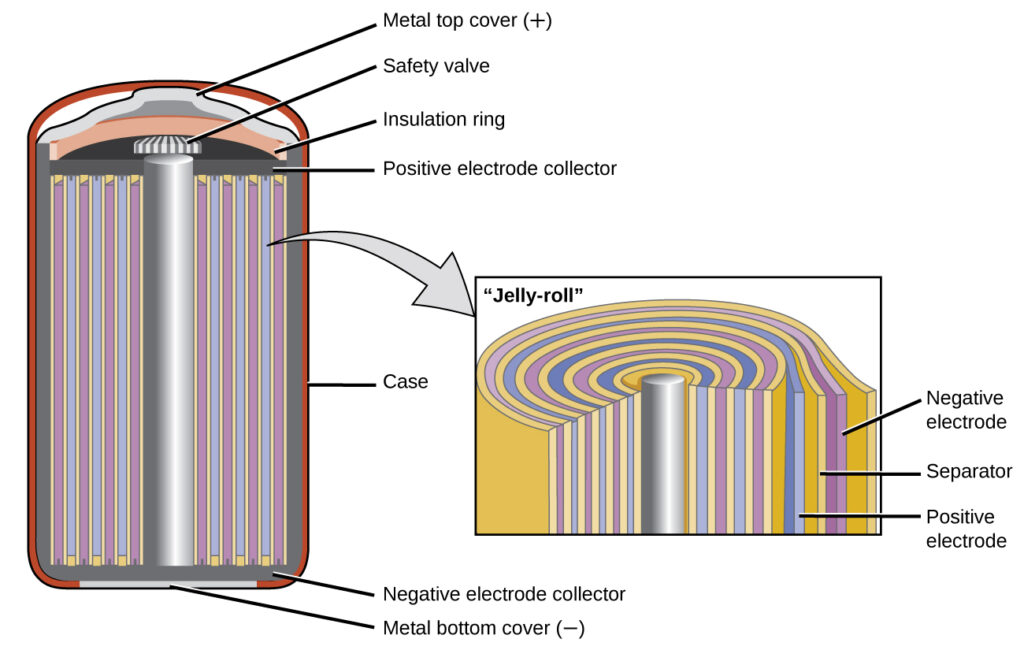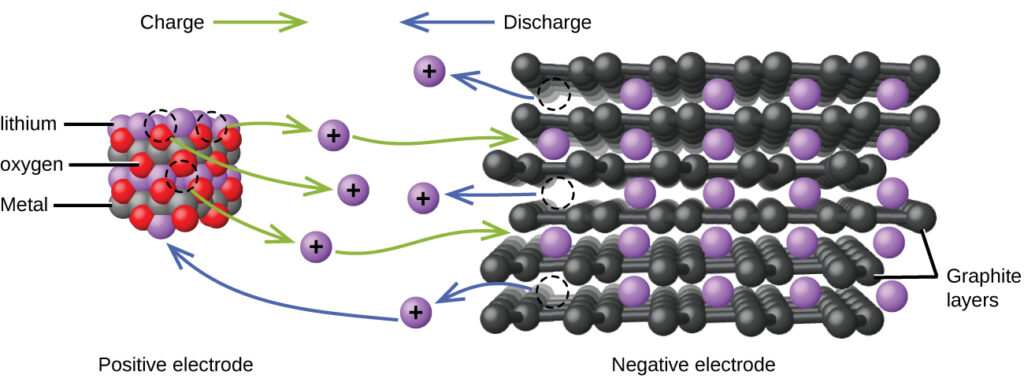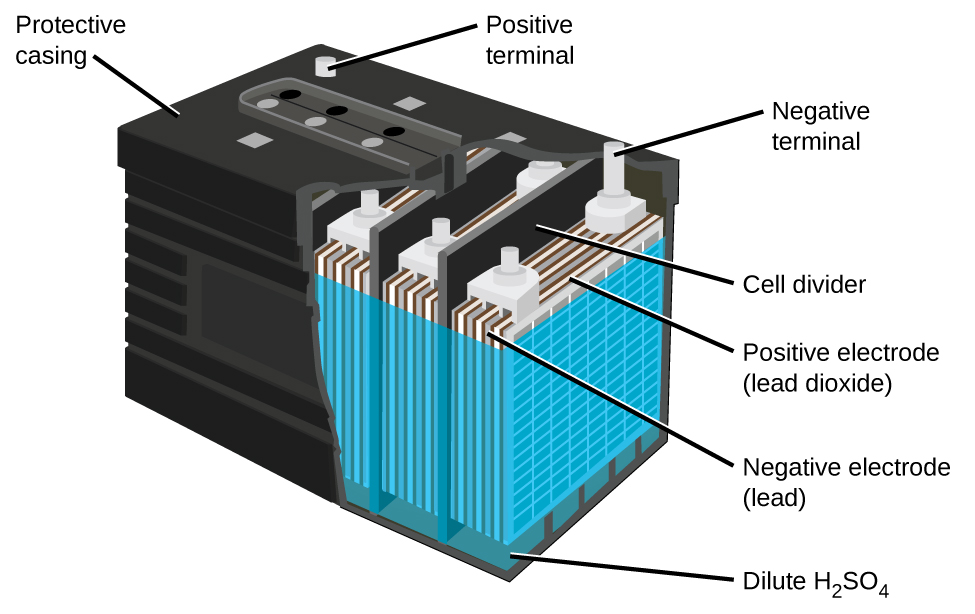Nickel-cadmium, or NiCd, batteries consist of a nickel-plated cathode, cadmium-plated anode, and a potassium hydroxide electrode. The positive and negative plates, which are prevented from shorting by the separator, are rolled together and put into the case. This is a “jelly-roll” design and allows the NiCd cell to deliver much more current than a similar-sized alkaline battery. The reactions are
anode: Cd(s) + 2OH (aq) ⟶ Cd(OH)2(s) + 2e−
cathode: NiO2(s) + 2H2O(l) + 2e− ⟶ Ni(OH)2(s) + 2OH−(aq)
cell: Cd(s) + NiO2(s) + 2H2O(l) ⟶ Cd(OH)2(s) + Ni(OH)2(s) Ecell~1.2V
When properly treated, a NiCd battery can be recharged about 1000 times. Cadmium is a toxic heavy metal so NiCd batteries should never be ruptured or incinerated, and they should be disposed of in accordance with relevant toxic waste guidelines.

Visit this site for more information about nickel cadmium rechargeable batteries.
Lithium ion batteries are among the most popular rechargeable batteries and are used in many portable electronic devices. The reactions are
$$\text{anode: }LiCoO_2 ⇌ Li_{1−x}CoO_2 +xLi^+ + xe^−$$ $$\text{cathode: }xLi^+ + xe^− + xC_6 ⇌ xLiC_6$$ $$\text{cell: }LiCoO_2+xC_6⇌Li_{1-x}CoO_2+xLiC_6\qquad E_{cell}~3.7\;V$$The variable stoichiometry of the cell reaction leads to variation in cell voltages, but for typical conditions, x is usually no more than 0.5 and the cell voltage is approximately 3.7 V. Lithium batteries are popular because they can provide a large amount current, are lighter than comparable batteries of other types, produce a nearly constant voltage as they discharge, and only slowly lose their charge when stored.

The lead acid battery is the type of secondary battery commonly used in automobiles. It is inexpensive and capable of producing the high current required by automobile starter motors. The reactions for a lead acid battery are
anode: Pb(s) + HSO4–(aq) ⟶ PbSO4(s) + H+(aq) + 2e–
cathode: PbO2(s) + HSO4–(aq) + 3H+(aq) + 2e– ⟶ PbSO4(s) + 2H2O(l)
cell: Pb(s) + PbO2(s) + 2H2SO4(aq) ⟶ 2PbSO4(s) + 2H2O(l) Ecell ~ 2 V
Each cell produces 2 V, so six cells are connected in series to produce a 12-V car battery. Lead acid batteries are heavy and contain a caustic liquid electrolyte, H2SO4(aq), but are often still the battery of choice because of their high current density. Since these batteries contain a significant amount of lead, they must always be disposed of properly.

Watch this video for more information about lead acid batteries.